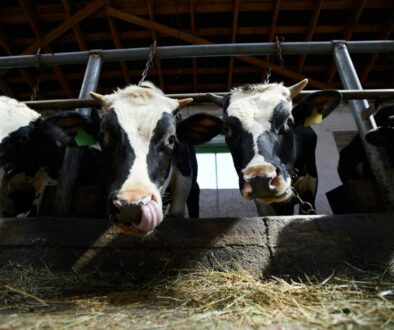EPA must tighten pesticide rules to protect pollinators like bees and butterflies, petition argues
US regulators should require pesticide makers to more thoroughly tests their products for toxicity to insects before approval, according to a petition submitted to the Environmental Protection Agency (EPA) on Tuesday by an environmental advocacy group.
Most pesticides registered for use in the US have not been rigorously tested for their impacts on insects other than honeybees, a single non-native species. Scientists and conservationists have argued for years that this system fails to protect pollinators and underestimates the toll of pesticides on these animals, which is especially relevant given the decline of many insect species worldwide.
The EPA only requires that manufacturers perform, at a minimum, three narrow tests on adult bees to study a chemical’s toxicity on insects.
“They’re not an appropriate surrogate for the other 4,000 wild species we have in North America, nor are they a surrogate for other pollinators like moths and butterflies,” said Rosemary Malfi with the Xerces Society for Invertebrate Conservation.
The petition was filed on behalf of Xerces by the environmental law group Earthjustice.
Many of proposed changes come directly from EPA experts or academics invited to advise the agency.
“They’re not following their own recommendations,” Malfi said.
Specifically, the petition asks the agency to codify, or require, tests on larval honeybees, solitary bees, bumblebees, moths, and butterflies.
The petition comes a week after the EPA said they plan to list the monarch butterfly as a threatened species under the Endangered Species Act. This is but one species that can be harmed by the profligate use of insecticides – but testing on such effects are not currently required, even though federal law dictates that chemicals should not cause unreasonable harm to insects.
“We have almost no information about how various pesticides affect butterflies generally, even the monarch,” Malfi said, because most of the toxicity data comes from the registrants and they’re not usually required to look at impacts on butterflies and moths.
That’s a problem, since some pesticides – such a class of poisons called diamides, including the chemical chlorantraniliprole – are designed specifically to kill butterfly and moth larvae.
Monarch caterpillars are hundreds of times more sensitive to diamide insecticides than honeybees, research shows.
Asked for comment, an EPA spokesperson said “EPA is reviewing the petition.”
Many of these steps have already been taken by the European Food Safety Authority, and the EPA could partner with that agency to collect some of the data thus procured, said Sharmeen Morrison, an attorney with Earthjustice.
The EPA is obligated to respond to the petition, but there is no exact timetable. If they don’t respond, or deny it outright, “a lawsuit could be the next step,” Morrison added. “There’s a world in which the EPA grants some portion of our petition because these asks are highly practical.”
That being said, the specter of a second upcoming Trump administration does not exactly inspire optimism, she added.
Many species of insects, including bees, moths, butterflies, and more, can be unintentionally killed or harmed by neonicotinoids, systemic pesticides that are taken up by roots and spread to every part of a plant.
Bumblebees need to be tested, scientists argue, since they have a different physiology than honeybees but are every bit as important as pollinators and are native to the U.S. Nearly a third of North American bumble bee species are threatened with extinction, and many species have decline significantly in recent years. Likewise, solitary bees deserve attention since there are hundreds of species of them and they usually live in burrows in the soil, putting them much more at risk of pesticide exposure than honeybees.
Several neonicotinoids are up for re-registration in 2025. If the EPA properly evaluated them, they would not be renewed because of their extreme toxicity to pollinators, the petition argues. Hence the need to collect additional data on non-honeybees.
“If EPA doesn’t collect this data, it will make the same mistake it always makes – registering these without a full portrait of the impacts,” Morrison said.
The three codified tests include one to examine a pesticides’ acute toxicity on adult honeybees; a second that looks at lethality of exposure to chemical residues on leaves; and a third generic and vaguely constituted test to mimic exposure under “real-world” field conditions. But this third set of tests can be waived.
Another reason why more testing is necessary – on larval bees, as well as species such as moths and butterflies – is because some pesticides inhibit growth and development.
So-called insect-growth regulators can be “practically non-toxic” to adult honeybees, according to the EPA. “But the product is designed to interrupt insect development and its registration by EPA did not involve tests on larval honeybees. This is an example of a pesticide that has gone to market without fully considering risks,” Malfi said.
This specific chemical has also been found present in milkweed plants – the only food source for monarch butterflies – in several areas of the U.S.
(Featured image by Daniel Mirlea for Unspash+.)




